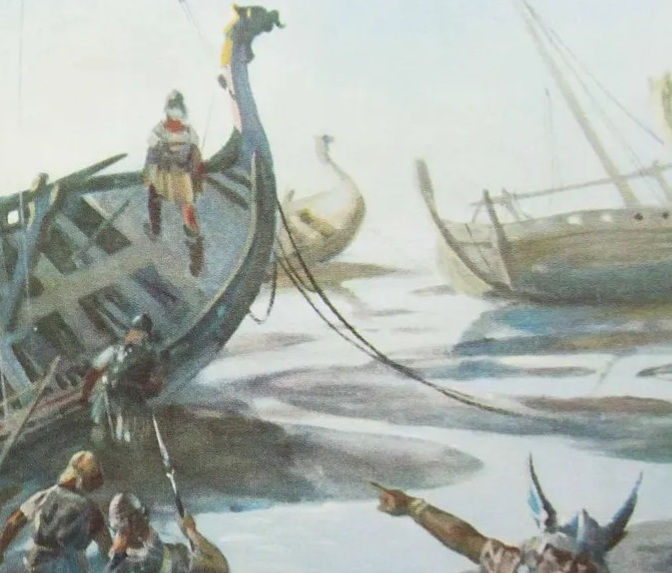Dryslwyn Castle, Carmarthenshire, Wales
- Michael Smith
- Aug 31, 2020
- 4 min read
Updated: Oct 8

On an isolated hill rising dramatically above the winding meanders of the Tywi floodplain in south Wales stands Dryslwyn Castle, a native Welsh castle later expanded into a small town borough before eventually being abandoned.
History
In the dispute following the death of Rhys ap Gruffydd (the Lord Rhys) of Deheubarth in 1197, one of his sons, Rhys ap Rhys (also known as Rhys Gryg (the "hoarse")) was granted Ystrad Tywi, an area of the kingdom which also included Dinefwr, the ancient royal seat. It was in this area that he built the core of the current Dryslwyn castle in the 1220s.

Like Dinefwr – indeed like many native Welsh castles - it is dramatically sited; in this case on an isolated hill with commanding views up and down the valley. In its earliest form, the castle included a large round tower and a walled courtyard containing the great hall, the significant foundations of which can still be seen. It was truly a castle in the landscape.
In 1233, the castle passed to Maredudd ap Rhys who established Dryslwyn as the administrative centre for Ystrad Tywi. It was he who built an additional great chamber next to the great hall and added the second (now Middle) ward to the north east of the main enclosure.
In 1271, the castle passed to Rhys ap Maredudd. It was during this period, possibly as a consequence of Rhys’ loyalty to the English crown, that Rhys was able to expand the castle further by adding an additional – outer ward – and a further suite of internal buildings.

It is these buildings which still impress today; their windows forming a dramatic silhouette against the sky when viewing the castle from below or from further down the valley. During this time, a small township also began to spring up on the plateau next to the castle on the hill top; the borough received its charter in 1281.
Alas, in 1287, Rhys rebelled against the English and, after a siege lasting three weeks, the castle was taken by Edmund of Cornwall. Rhys was subsequently captured and executed and the castle came under the English crown. Taken by Owain Glyndwr in 1403, it remained in Welsh hands until 1406 before it was recaptured. The castle may have fallen into disuse at this point and was then largely demolished to prevent its further use.
Description

From below, the castle is best seen from the south or south west, where the hill rises precipitously from the valley bottom and the larger buildings of Rhys ap Maredudd can be seen to their advantage.
Climbing the hill by the footpath to the summit, the visitor crosses the outer ditch to enter first the town borough and then to progress to the outer ward. Neither the outer nor middle wards have survived to a significant level architecturally although both contain extensive footings and some remnants of both gatehouses can be seen.
It is the inner ward which contains most of interest today. Entering via a cobbled passageway, the visitor sees the significant foundations of Rhys Gryg’s round tower to the left. Standing next to it and looking over the valley, the visitor begins to understand the nature of the building as a statement of lordship in its setting. It is possible to look into the tower itself although the interior is fenced off to the visitor.
Passing further into the ward, immediately facing the visitor is the under croft to the original great hall, giving a strong flavour of its original function as a centre for lordly administration and festivity.
When the castle was further expanded in the late thirteenth century, an impressive suite of apartments, including a magnificent chapel tower, was added to the south side of the castle, commanding great views of the valley but also, in terms of their architectural stature, serving to impress those below with the power of their lords. The eastern wall, which was also strengthened during this period, contains the remains of two garderobe shafts for use by the occupants.
Accessibility
The ruins are in the care of Cadw and are freely accessible; a well-finished footpath leads to the summit of the plateau; after which, different trodden footpaths lead to, and around, the remains. Reasonably stout footwear should be worn although the pathways are good enough for shoes of most kinds.
Further information
Coflein listing for Dryslwyn castle - here
Coflein listing for Dryslwyn town borough - more here
Ancient and Mediaeval Heritage page, with plans - more here
About the author, Michael Smith

I am a British translator and illustrator of medieval literature. I am also an accomplished printmaker, with work in private collections worldwide.
My books, including a translation of Sir Gawain and the Green Knight and the Alliterative Morte Arthure, are available through all the usual outlets. My translation of The Romance of William and the Werewolf was published in 2024. All my books feature my own linocut prints as their illustrations.
To find out more about me, please click here
For more details of my books and how to purchase signed copies, click here.
























Comments